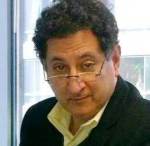Updated
Business Brief: Morocco Challenged to Build Human Capital Assets; Domestic Banking Sector Growing Stronger
Jean R. AbiNader, MATIC
September 21, 2017
On the heels of the recent World Bank report and workshop in Morocco on the need for increased investment in inclusive human capital development, two articles echoed the recommendations. Good news is that the domestic banking sector continues to grow and serve more customers.
Focus on Morocco’s need to build its human resources. Despite the fact that Morocco’s human capital is one of the Kingdom’s key attractions to potential investors, realities beyond the manufacturing and enterprise zones in the country remain challenging in terms of both employment and quality of life. The World Economic Forum’s recently released Human Capital Index ranks Morocco 118th out of 130 countries, with special attention focused on youth unemployment.
The Index measures how well countries perform compared to their potential based on four indicators: capacity, capacity development, development, and know-how. “The country ranks 88th in the 15-24 age group and 78th in the 25-54 age group. It occupies the 121st position in terms of deploying the capacities of its human capital. As for infrastructure development, it is ranked at the 99th place with a score of 53.9. In addition, the Kingdom is ranked 108th in terms of the know-how of its human capital. The score of each country in the ranking is obtained by analyzing several factors, such as the volume of the labor force, the GDP per capita, and the public expenditure allocated to education or the unemployment rate.”
What this means, according to the analysis, is that Morocco is developing only 56% of its talent, while 44% are either marginalized or not enrolled in relevant programs or working in productive sectors. It is no surprise that Morocco’s agricultural sector, which represents up to 40% of the workforce, is largely informal, seasonal, and lacks pathways for workers to acquire skills and build businesses. And Morocco is not alone. Among Arab and African countries, there is a consistent trend that despite government efforts to close the gap, youth, in particular, lack the educational, technical, and vocational training that would enable them to pursue higher value employment.
“The development of human capital, through education, skills development, and deployment in the service of economic development, is considered to be the key factor, even more so than financial capital, in linking innovation, competitiveness, and growth to 21st century,” according to the Index.
Morocco has allocated and attracted from donors millions of dollars to invest in human capital development. It has made great strides in the industrial sector, creating more than 200,000 jobs in the past five years, on track to hit 500,000 by 2020. Minister of National Education Mohamed Hassad recently announced a series of measures to generate more value from the more than $6 billion spent annually on education. Among the steps he mentioned are increasing the number of teachers, improving infrastructure, introducing a broader range of vocational/technical skills classes, reducing class size, and clarifying the teaching of foreign languages.
On a related topic, an article on LesEco asked if Morocco was constrained in its capacity to achieve stronger economic growth by its dependence on agriculture, rising unemployment, and the general public mood of declining prosperity. It points out that “7.3% annual growth is the performance that Morocco will have to achieve in order to win its ticket to the club of emerging countries.”
According to the Moroccan Center of Conjuncture (CMC), this rate is achievable if Morocco accelerates its reforms, extends them to other sectors “with high added value and job creation” potential. “Significant progress is still needed to better structure, modernize, and make the national economy more competitive,” said Habib El Malki, the Center’s chair. “This can only be achieved if certain obstacles are removed. The most important are the dependence of the Moroccan economy on the agricultural sector, the profound imbalances characterizing the labor market, public finance, foreign trade, and the weight of the informal sector.”
Central Bank looks at domestic progress. Latest figures from the Bank Al-Maghrib, released during the World Forum on Financial Inclusion Policies (GPF), indicate that the rate of banking exceeds 70% in Morocco, one of the best in the MENA region. This represents a phenomenal increase over the lower-than-25% figure 10 years ago.
According to Abdellatif Jouahri, governor of the central bank, this results from the bank’s commitment to financial inclusion to support the country’s economic development in the financial sector and beyond. Jouahri told the Forum that a strong domestic banking system develops capital markets, providing investment funding and positioning the Kingdom as a regional financial hub.
